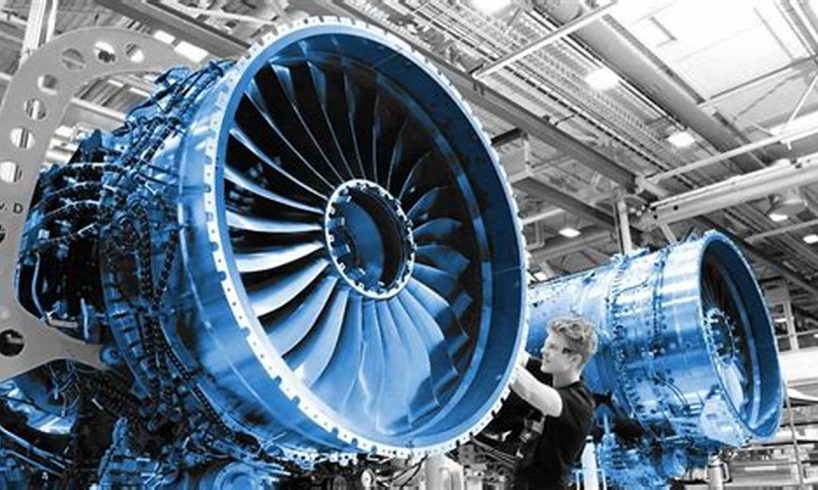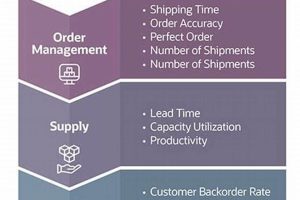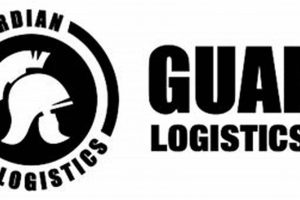
Aerospace logistics tracking is the process of monitoring and managing the flow of goods and materials within the aerospace industry. It involves tracking the movement of parts, components, and finished products throughout the supply chain, from suppliers to manufacturers to customers.
Aerospace logistics tracking is essential for ensuring the efficient and timely delivery of critical components and materials. It helps to reduce costs, improve inventory management, and increase customer satisfaction. In addition, aerospace logistics tracking can help to improve safety and security by providing real-time visibility into the movement of goods and materials.
There are a number of different technologies that can be used for aerospace logistics tracking, including GPS, RFID, and barcodes. Each technology has its own advantages and disadvantages, and the best solution for a particular application will depend on the specific needs of the user.
1. Visibility
In the context of aerospace logistics tracking, visibility refers to the ability to track the movement of goods and materials throughout the supply chain. This includes tracking the location of goods and materials, as well as their status (e.g., in transit, in storage, etc.). Visibility is essential for ensuring that goods and materials are delivered to the right place, at the right time, and in the right condition.
- Real-time tracking provides up-to-date information on the location and status of goods and materials. This information can be used to track the progress of shipments, identify delays, and resolve problems quickly.
- End-to-end visibility provides visibility into the entire supply chain, from suppliers to manufacturers to customers. This information can be used to identify inefficiencies and improve the flow of goods and materials.
- Predictive analytics can be used to identify potential problems and take corrective action before they occur. This can help to prevent delays and ensure that goods and materials are delivered on time.
- Data analytics can be used to identify trends and patterns in the supply chain. This information can be used to improve decision-making and make the supply chain more efficient.
Visibility is a critical aspect of aerospace logistics tracking. It enables businesses to track the movement of goods and materials throughout the supply chain, identify inefficiencies, and improve the flow of goods and materials. By investing in visibility, businesses can improve the efficiency and effectiveness of their aerospace logistics operations.
2. Accuracy
Accuracy is essential for aerospace logistics tracking. Inaccurate data can lead to delays, errors, and even accidents. There are a number of factors that can affect the accuracy of aerospace logistics tracking data, including:
- Data entry errors: Data entry errors are one of the most common sources of inaccurate data. These errors can occur when data is entered manually or when data is transferred from one system to another.
- Sensor errors: Sensors can also be a source of inaccurate data. Sensors can malfunction or be miscalibrated, which can lead to incorrect data being collected.
- Environmental factors: Environmental factors, such as extreme temperatures or vibration, can also affect the accuracy of data collected by sensors.
- Human error: Human error is another common source of inaccurate data. Humans can make mistakes when interpreting data or when making decisions based on data.
There are a number of steps that can be taken to improve the accuracy of aerospace logistics tracking data. These steps include:
- Using data validation techniques: Data validation techniques can be used to identify and correct errors in data. These techniques can include range checks, consistency checks, and plausibility checks.
- Calibrating sensors regularly: Sensors should be calibrated regularly to ensure that they are providing accurate data. Calibration should be performed by a qualified technician.
- Training personnel: Personnel should be trained on how to properly collect and interpret data. This training should include instruction on data entry procedures, sensor calibration, and environmental factors that can affect data accuracy.
By following these steps, businesses can improve the accuracy of their aerospace logistics tracking data. This will lead to improved decision-making, reduced costs, and improved safety.
3. Timeliness
In the context of aerospace logistics tracking, timeliness refers to the ability to deliver goods and materials to the right place, at the right time. This is essential for ensuring that aerospace projects are completed on time and within budget. There are a number of factors that can affect the timeliness of aerospace logistics tracking, including:
- Transportation delays: Transportation delays can occur for a variety of reasons, such as weather, traffic, and mechanical problems. These delays can cause goods and materials to arrive late, which can disrupt aerospace projects.
- Customs delays: Customs delays can occur when goods and materials are shipped across borders. These delays can be caused by a variety of factors, such as paperwork errors and inspections. Customs delays can cause goods and materials to arrive late, which can disrupt aerospace projects.
- Supplier delays: Supplier delays can occur when suppliers are unable to deliver goods and materials on time. These delays can be caused by a variety of factors, such as production problems and material shortages. Supplier delays can cause goods and materials to arrive late, which can disrupt aerospace projects.
- Human error: Human error can also contribute to delays in aerospace logistics tracking. For example, if a shipping label is incorrect, the goods may be shipped to the wrong location. Human error can also lead to delays in customs clearance and supplier deliveries.
There are a number of steps that can be taken to improve the timeliness of aerospace logistics tracking. These steps include:
- Using real-time tracking technology: Real-time tracking technology can be used to track the movement of goods and materials throughout the supply chain. This information can be used to identify delays and take corrective action quickly.
- Establishing clear communication channels: Clear communication channels should be established between all parties involved in the supply chain. This will help to ensure that everyone is aware of the latest information and can take appropriate action to avoid delays.
- Developing contingency plans: Contingency plans should be developed to address potential delays. These plans should include alternative transportation routes, suppliers, and customs clearance procedures.
- Training personnel: Personnel should be trained on the importance of timeliness in aerospace logistics tracking. This training should include instruction on how to identify and avoid delays.
By following these steps, businesses can improve the timeliness of their aerospace logistics tracking operations. This will lead to improved efficiency, reduced costs, and improved customer satisfaction.
4. Security
Security is a critical aspect of aerospace logistics tracking. The aerospace industry is a target for a variety of security threats, including terrorism, theft, and espionage. These threats can have a significant impact on the safety and security of aerospace operations, as well as the integrity of the global supply chain.
- Physical security: Physical security measures are designed to protect aerospace facilities, equipment, and materials from unauthorized access. These measures can include fences, gates, security cameras, and access control systems.
- Cybersecurity: Cybersecurity measures are designed to protect aerospace computer systems and networks from unauthorized access, use, disclosure, disruption, modification, or destruction. These measures can include firewalls, intrusion detection systems, and anti-malware software.
- Personnel security: Personnel security measures are designed to ensure that only authorized personnel have access to aerospace facilities, equipment, and materials. These measures can include background checks, security clearances, and training.
- Transportation security: Transportation security measures are designed to protect aerospace goods and materials from theft or damage during transportation. These measures can include secure packaging, tamper-evident seals, and armed escorts.
By implementing these security measures, aerospace companies can help to protect their operations from security threats. This will help to ensure the safety and security of the aerospace industry, as well as the integrity of the global supply chain.
5. Cost-effectiveness
Cost-effectiveness is a critical aspect of aerospace logistics tracking. The aerospace industry is a complex and expensive industry, and it is important to find ways to reduce costs without sacrificing quality or service. Aerospace logistics tracking can help to reduce costs in a number of ways.
One way that aerospace logistics tracking can reduce costs is by improving inventory management. By tracking the movement of goods and materials throughout the supply chain, businesses can identify inefficiencies and reduce waste. For example, if a business knows that a particular part is often out of stock, it can increase its inventory of that part to avoid delays and lost sales. Conversely, if a business knows that a particular part is rarely used, it can reduce its inventory of that part to save money.
Another way that aerospace logistics tracking can reduce costs is by improving transportation efficiency. By tracking the movement of goods and materials, businesses can identify inefficiencies in their transportation network and make changes to improve efficiency. For example, if a business knows that a particular route is often congested, it can reroute its shipments to avoid delays and reduce fuel costs.In addition to reducing costs, aerospace logistics tracking can also improve customer service. By providing real-time visibility into the movement of goods and materials, businesses can keep customers informed about the status of their orders. This can help to reduce customer anxiety and improve satisfaction.Overall, aerospace logistics tracking is a valuable tool that can help businesses reduce costs, improve efficiency, and enhance customer service. By investing in aerospace logistics tracking, businesses can gain a competitive advantage in the global marketplace.
6. Scalability
In the context of aerospace logistics tracking, scalability refers to the ability of a system to handle increasing volumes of data and transactions without sacrificing performance. This is important because the aerospace industry is constantly growing and evolving, and logistics tracking systems need to be able to keep up with demand. A scalable logistics tracking system will be able to handle the increased volume of data and transactions without experiencing performance degradation.
There are a number of benefits to using a scalable logistics tracking system. These benefits include:
- Improved efficiency: A scalable logistics tracking system can help to improve efficiency by automating tasks and processes. This can free up employees to focus on other tasks, such as customer service and product development.
- Reduced costs: A scalable logistics tracking system can help to reduce costs by eliminating the need for manual data entry and tracking. This can save businesses time and money.
- Improved customer service: A scalable logistics tracking system can help to improve customer service by providing real-time visibility into the status of shipments. This can help customers to track their orders and get updates on delivery times.
There are a number of different ways to implement a scalable logistics tracking system. One common approach is to use a cloud-based system. Cloud-based systems are scalable because they can be easily expanded to handle increasing volumes of data and transactions. Another approach is to use a distributed system. Distributed systems are scalable because they can be spread across multiple servers, which can help to improve performance.
The choice of which approach to use will depend on the specific needs of the business. However, it is important to choose a scalable logistics tracking system in order to ensure that the system can keep up with demand as the business grows.
7. Flexibility
Flexibility is a critical component of aerospace logistics tracking. The aerospace industry is constantly evolving, and logistics tracking systems need to be able to adapt to changing requirements. A flexible logistics tracking system will be able to handle a variety of changes, such as:
- Changes in the volume of data and transactions
- Changes in the types of data being tracked
- Changes in the business processes that are being tracked
There are a number of benefits to using a flexible logistics tracking system. These benefits include:
- Improved efficiency: A flexible logistics tracking system can help to improve efficiency by automating tasks and processes. This can free up employees to focus on other tasks, such as customer service and product development.
- Reduced costs: A flexible logistics tracking system can help to reduce costs by eliminating the need for manual data entry and tracking. This can save businesses time and money.
- Improved customer service: A flexible logistics tracking system can help to improve customer service by providing real-time visibility into the status of shipments. This can help customers to track their orders and get updates on delivery times.
There are a number of different ways to implement a flexible logistics tracking system. One common approach is to use a cloud-based system. Cloud-based systems are flexible because they can be easily scaled up or down to meet changing demand. Another approach is to use a modular system. Modular systems are flexible because they can be easily customized to meet the specific needs of the business.
The choice of which approach to use will depend on the specific needs of the business. However, it is important to choose a flexible logistics tracking system in order to ensure that the system can adapt to changing requirements.
8. Integration
Integration is a critical component of aerospace logistics tracking. It enables the seamless flow of data between different systems and applications, providing a comprehensive view of the supply chain. This integration is essential for efficient and effective aerospace logistics tracking, as it allows businesses to track the movement of goods and materials throughout the supply chain in real time.
There are a number of benefits to integrating aerospace logistics tracking systems with other business systems. These benefits include:
- Improved efficiency: Integrated systems can automate tasks and processes, freeing up employees to focus on other tasks, such as customer service and product development.
- Reduced costs: Integrated systems can eliminate the need for manual data entry and tracking, saving businesses time and money.
- Improved customer service: Integrated systems can provide real-time visibility into the status of shipments, helping businesses to keep customers informed and improve satisfaction.
There are a number of different ways to integrate aerospace logistics tracking systems with other business systems. One common approach is to use an enterprise resource planning (ERP) system. ERP systems are designed to integrate all of the different business processes within an organization, including logistics tracking. Another approach is to use a supply chain management (SCM) system. SCM systems are designed to manage the flow of goods and materials throughout the supply chain, and they can be integrated with aerospace logistics tracking systems to provide a comprehensive view of the supply chain.
The choice of which approach to use will depend on the specific needs of the business. However, it is important to choose an integration approach that will meet the business’s current and future needs. This will ensure that the business can reap the full benefits of integrated aerospace logistics tracking.
9. Sustainability
Sustainability is a critical component of aerospace logistics tracking. The aerospace industry is a major contributor to greenhouse gas emissions, and logistics tracking can play a significant role in reducing these emissions.
There are a number of ways that aerospace logistics tracking can be used to improve sustainability. For example, by tracking the movement of goods and materials, businesses can identify inefficiencies in their supply chain and make changes to improve efficiency. This can lead to reduced fuel consumption and emissions. Additionally, by using real-time tracking, businesses can reduce the need for physical inventories, which can also lead to reduced emissions.
In addition to reducing emissions, aerospace logistics tracking can also help businesses to improve their environmental performance in other ways. For example, by tracking the movement of hazardous materials, businesses can ensure that these materials are handled and disposed of properly. This can help to protect the environment and reduce the risk of accidents.
Overall, aerospace logistics tracking is a valuable tool that can help businesses to improve their sustainability performance. By using aerospace logistics tracking, businesses can reduce their greenhouse gas emissions, improve their environmental performance, and protect the environment.
FAQs on Aerospace Logistics Tracking
Aerospace logistics tracking plays a critical role in ensuring the efficient and timely delivery of goods and materials within the aerospace industry. Here are some frequently asked questions about aerospace logistics tracking:
1. What is aerospace logistics tracking?
Aerospace logistics tracking involves monitoring and managing the flow of goods and materials within the aerospace industry. It tracks the movement of parts, components, and finished products throughout the supply chain, from suppliers to manufacturers to customers.
2. Why is aerospace logistics tracking important?
Aerospace logistics tracking is essential for ensuring the timely delivery of critical components and materials, reducing costs, improving inventory management, and increasing customer satisfaction. Additionally, it can enhance safety and security by providing real-time visibility into the movement of goods and materials.
3. What are the key components of aerospace logistics tracking?
The key components of aerospace logistics tracking include visibility, accuracy, timeliness, security, cost-effectiveness, scalability, flexibility, integration, and sustainability.
4. How can businesses improve their aerospace logistics tracking?
Businesses can improve their aerospace logistics tracking by investing in real-time tracking technology, establishing clear communication channels, developing contingency plans, and training personnel on the importance of timeliness and accuracy.
5. What are the benefits of integrating aerospace logistics tracking systems with other business systems?
Integrating aerospace logistics tracking systems with other business systems can improve efficiency, reduce costs, and enhance customer service by providing a comprehensive view of the supply chain.
6. How does aerospace logistics tracking contribute to sustainability?
Aerospace logistics tracking can contribute to sustainability by identifying inefficiencies in the supply chain, reducing fuel consumption and emissions, and improving the environmental performance of businesses.
Overall, aerospace logistics tracking is a critical tool for businesses in the aerospace industry. By implementing effective aerospace logistics tracking practices, businesses can improve efficiency, reduce costs, enhance customer satisfaction, and contribute to sustainability.
Note: The information provided in this FAQ section is intended for general knowledge and informational purposes only, and does not constitute professional advice. It is recommended to consult with experts in the field for specific guidance and tailored solutions.
Aerospace Logistics Tracking Tips
Aerospace logistics tracking is a critical process for ensuring the efficient and timely delivery of goods and materials within the aerospace industry. By implementing effective aerospace logistics tracking practices, businesses can improve efficiency, reduce costs, enhance customer satisfaction, and contribute to sustainability.
Tip 1: Leverage Real-Time Tracking Technology
Real-time tracking technology provides up-to-date information on the location and status of goods and materials. This information can be used to track the progress of shipments, identify delays, and resolve problems quickly. For example, a manufacturer can use real-time tracking to monitor the delivery of critical components from a supplier, ensuring that they arrive on time for production.
Tip 2: Establish Clear Communication Channels
Clear communication channels are essential for effective aerospace logistics tracking. Businesses should establish clear and open communication channels between all parties involved in the supply chain, including suppliers, manufacturers, and customers. This will help to ensure that everyone is aware of the latest information and can take appropriate action to avoid delays.
Tip 3: Develop Contingency Plans
Contingency plans are important for mitigating potential risks and disruptions in the supply chain. Businesses should develop contingency plans to address potential delays, such as alternative transportation routes, suppliers, and customs clearance procedures. For example, an aerospace manufacturer may develop a contingency plan to use an alternative supplier if their primary supplier experiences a production delay.
Tip 4: Train Personnel on Importance of Timeliness and Accuracy
Personnel involved in aerospace logistics tracking should be trained on the importance of timeliness and accuracy. This training should include instruction on data entry procedures, sensor calibration, and environmental factors that can affect data accuracy. By training personnel on the importance of timeliness and accuracy, businesses can improve the quality of their aerospace logistics tracking data.
Tip 5: Integrate Aerospace Logistics Tracking Systems with Other Business Systems
Integrating aerospace logistics tracking systems with other business systems can improve efficiency, reduce costs, and enhance customer service. For example, integrating an aerospace logistics tracking system with an enterprise resource planning (ERP) system can provide a comprehensive view of the supply chain, enabling businesses to track the movement of goods and materials from suppliers to customers in real time.
Tip 6: Focus on Sustainability
Aerospace logistics tracking can contribute to sustainability by identifying inefficiencies in the supply chain, reducing fuel consumption and emissions, and improving the environmental performance of businesses. For example, an aerospace company may use logistics tracking data to identify opportunities for reducing fuel consumption by optimizing transportation routes.
By following these tips, businesses can improve the efficiency and effectiveness of their aerospace logistics tracking operations. This will lead to improved customer service, reduced costs, and increased sustainability.
Conclusion
Aerospace logistics tracking is a critical function within the aerospace industry, ensuring the efficient and timely delivery of goods and materials. Through the implementation of robust tracking systems, businesses can enhance supply chain visibility, reduce costs, improve customer satisfaction, and contribute to sustainability efforts.
Effective aerospace logistics tracking involves leveraging real-time tracking technology, establishing clear communication channels, developing contingency plans, training personnel, integrating with other business systems, and focusing on sustainability. By adopting these practices, businesses can gain a competitive advantage, optimize their operations, and meet the evolving demands of the aerospace industry.






